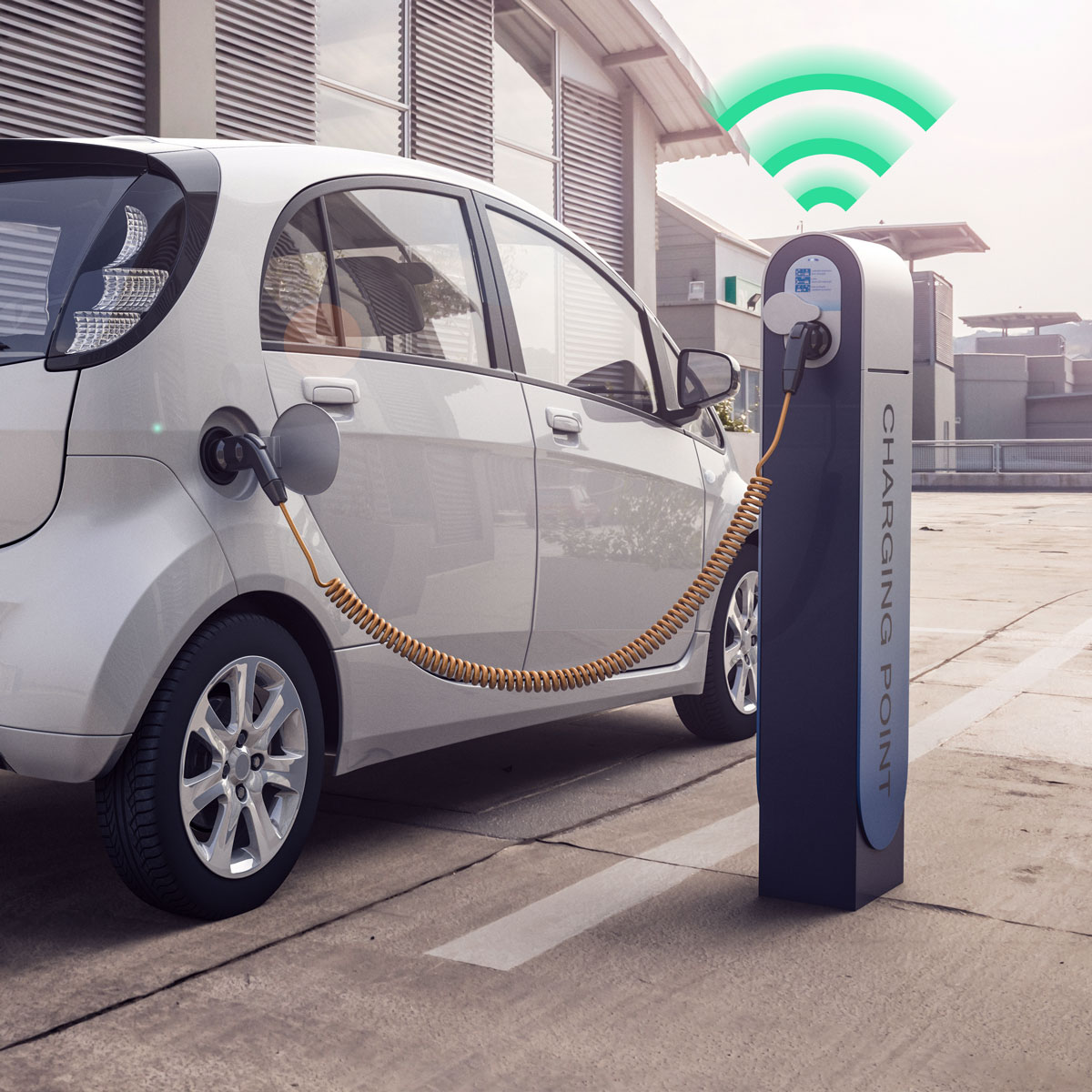The adoption of IoT in food is not a small trend. According to GlobeNewswire, The global IoT market in the food and beverage industry is expected to grow at a CAGR of 15.5 percent between 2023 and 2028, driven by the need for automation, real-time monitoring, and food safety. Businesses that adapt now will be the ones leading tomorrow.
What is IoT in Food Industry?
IoT in the food industry means using connected devices, sensors, and systems to track and control every step of the food chain. From farms to dining tables, IoT ensures food is produced, stored, and delivered in the best possible conditions. This technology helps reduce waste, maintain freshness, and improve safety.
Its importance becomes even clearer when we consider perishable goods. Fruits, vegetables, meat, and dairy need constant monitoring of temperature, humidity, and storage conditions. With IoT, businesses can track these factors in real time and prevent spoilage before it happens. This creates a food chain that is transparent, efficient, and trustworthy.
IoT Applications Across the Food Industry
IoT applications span every stage of the food supply chain. Here are the key areas where it makes an impact:
Smart Farming and Agriculture
- Sensors monitor soil quality, water use, and crop health. Automated irrigation systems save resources while improving yields. Farmers can also use IoT data to predict the best planting and harvesting times. This way, farmers can adopt smart farming and contribute to the Agriculture industry.
Food Processing and Manufacturing
- Machines equipped with IoT sensors improve quality control. Predictive maintenance reduces breakdowns and ensures hygienic operations. IoT also monitors cleaning schedules to maintain safety standards. Companies like Snacktime Finland have already demonstrated how IoT improves efficiency in automated food services.
Cold Chain Logistics
- Temperature and humidity sensors protect perishable goods during transport. Real-time alerts reduce the risk of spoilage. GPS tracking improves visibility and builds accountability across the supply chain. For better GPS tracing, Com4’s Global IoT SIM Cards for GPS Tracking can be an ideal choice.
Smart Storage and Warehouse
- IoT devices optimise energy use in cold rooms by adjusting cooling systems based on real-time data. They also track stock levels and monitor product freshness to ensure safety and compliance. Automated alerts notify managers when products are nearing expiry or conditions fall outside the safe range. In addition, IoT supports automated reordering systems that keep essential items in stock.
Retail and Restaurants
- In retail stores, smart shelves powered by IoT detect when stock is running low or when products are close to expiry, allowing quick restocking and reducing waste. Restaurants use IoT systems to monitor inventory, track ingredient usage, and manage energy consumption in kitchens.
Food Delivery Services
- IoT supports real-time order tracking and route optimisation, making sure food reaches customers faster and in the right condition. Food delivery services, such as Just Eat Norway, highlight how IoT streamlines last-mile operations for better customer satisfaction.
Food Packaging
- Smart packaging integrates freshness sensors and digital labels that monitor product quality throughout its shelf life. These technologies provide customers with real-time information on whether food is still safe to eat, reducing uncertainty and increasing trust. For businesses, the data collected helps track how products are stored and transported, highlighting weak points in the supply chain. Together, these applications create a connected food system where every step is monitored and optimised.

Role of IoT Sensors and Devices in Food Operations
IoT Sensors and devices are the backbone of IoT in the food industry. They collect vital data that businesses use to make decisions and take action. Without them, real-time visibility across the supply chain would not be possible.
- Temperature Sensors: These monitor food in cold storage and transport. They ensure perishable products like dairy and meat remain within safe temperature ranges. If the temperature changes, alerts help managers act quickly.
- Humidity Sensors: Humidity control is critical in warehouses and storage facilities. These sensors prevent mould growth and preserve product freshness. They are especially useful for fruits, vegetables, and baked goods.
- GPS Trackers: Logistics companies use GPS devices to track vehicles in real time. This improves delivery efficiency and reduces theft or delays. Customers also benefit from knowing the exact location of their orders.
- RFID Tags: Radio frequency identification tags track products throughout warehouses and retail outlets. They make inventory management more accurate and reduce manual errors. Businesses can quickly locate items and track shelf life.
- Gas Sensors: These detect gases like ethylene that indicate ripening or spoilage. By identifying unsafe levels, businesses can act before food becomes unfit for consumption. This reduces losses and protects consumer safety.
- Motion Sensors: Motion sensors improve warehouse automation by tracking movement and equipment activity. They ensure efficiency in storage operations and reduce accidents.
- Smart Meters: Energy use is one of the biggest costs in food operations. Smart meters measure energy consumption and help businesses reduce waste while cutting costs
- Connected Cameras: Cameras linked with IoT platforms monitor hygiene and safety in real time. They also help identify risks like contamination or improper handling.
Benefits of IoT in the food industry
IoT brings clear and measurable benefits to food businesses. It improves safety, reduces waste, and builds transparency across the supply chain. Each benefit contributes to stronger operations and better customer trust.
- Improved Food Safety: IoT devices monitor hygiene and storage conditions in real time. This reduces contamination risks and ensures compliance with safety regulations. Businesses can act immediately when issues arise, keeping products safe. Customers also gain more confidence knowing their food is handled in controlled conditions. Over time, this builds a stronger brand reputation.
- Reduced Food Waste: Spoilage is one of the biggest losses in the food industry. IoT prevents it by sending alerts when storage conditions change. Businesses can take immediate corrective actions to save products. Predictive analytics also helps avoid overproduction and manage inventory better. Together, these efforts cut costs and make operations more sustainable.
- Greater Efficiency: Manual monitoring is slow and prone to errors. IoT replaces this with automated systems that track everything in real time. For example, smart cooling systems use only the energy required, reducing costs. Automated reports save staff time and improve accuracy. Efficiency gains extend across farming, storage, logistics, and retail.
- Supply Chain Transparency: Consumers and regulators demand more visibility into how food is handled. IoT provides this by tracking products from source to shelf. Data shows where food came from, how it was transported, and whether it stayed within safe conditions. This transparency builds trust and helps businesses comply with regulatory demands. Transparency also improves customer loyalty.
- Predictive Maintenance: Food processing depends on machines running smoothly. IoT-enabled equipment sends alerts when parts are likely to fail. This allows repairs before breakdowns happen, avoiding costly delays. Predictive maintenance extends the life of equipment and reduces downtime. For large food factories, this is a major cost-saving advantage.
- Better Customer Experience: Retailers and food services use IoT data to understand customer needs. This allows them to stock the right products and provide fresher options. Restaurants benefit from smart ordering systems that track demand patterns. Customers enjoy faster service and better quality, leading to stronger satisfaction and repeat business.

Challenges in Adopting IoT in the Food Industry
IoT adoption is growing, but challenges remain. Businesses must address these to make IoT a success.
- High Initial Costs: Setting up sensors, networks, and platforms requires significant investment. Small and mid-sized companies often find it difficult to allocate budgets for IoT. However, long-term cost savings from reduced waste and improved efficiency make it worthwhile.
- Data Security Risks: Food traceability involves sensitive data. Protecting it from cyberattacks is crucial to maintain trust and comply with regulations. Businesses need secure networks and strict protocols to safeguard information.
- Connectivity Barriers: Remote farming areas often lack stable internet. Satellite solutions help, but integration can still be costly. Ensuring consistent global coverage is a key challenge for multinational operations.
- System Integration Issues: Many food factories rely on legacy systems that are not compatible with IoT. Connecting these systems requires effort and sometimes major upgrades. This slows down adoption in older facilities.
- Skilled Workforce Shortage: IoT solutions need skilled staff for operation and analysis. Many food businesses lack technical expertise and must invest in training or external support. This creates extra costs and slows down projects.
- Scalability Concerns: Starting with small IoT projects is easier than scaling them to thousands of devices. Businesses must plan infrastructure and security carefully to avoid bottlenecks. Poor planning can make scaling expensive and inefficient.
- Regulatory Compliance: Food safety regulations differ between regions. Businesses must ensure IoT systems comply with all applicable standards. Meeting these diverse requirements can be complex and resource-heavy.

Future Trends: What's Next for IoT in Food Industry?
The future of IoT in the food industry is set for rapid growth. According to GlobeNewswire, the global IoT market in food and beverages is projected to grow at a CAGR of 15.5 percent between 2023 and 2028. This expansion is fuelled by automation, the demand for real-time monitoring, and stricter safety standards.
Advanced technologies such as artificial intelligence and machine learning will analyse IoT data at scale. This will allow businesses to predict demand with accuracy, optimise farming practices, and streamline logistics. For example, predictive analytics will help prevent shortages during peak demand while reducing waste during slower periods.
Smart packaging will also gain traction. Digital labels and embedded freshness sensors will let consumers instantly check product quality. This improves safety and strengthens trust between brands and customers.
Blockchain is another trend that will reinforce food traceability. By recording every step in a tamper-proof system, businesses can prove product authenticity and regulatory compliance. This is vital as consumers and governments demand transparency across the food chain.
IoT is no longer an option for food businesses. It is a necessity. By connecting farms, factories, warehouses, and retail, IoT creates safer, more efficient, and more transparent food chains. With solutions such as connectivity packages, global IoT SIM cards, and satellite services, businesses can build reliable IoT systems that meet modern challenges.
The future of food depends on technology. IoT ensures that food is not only delivered faster but also safer and fresher.

.jpg)



.jpg)

